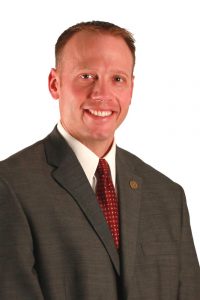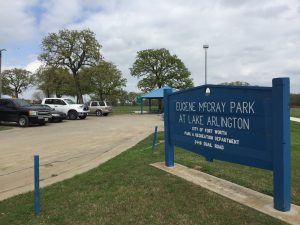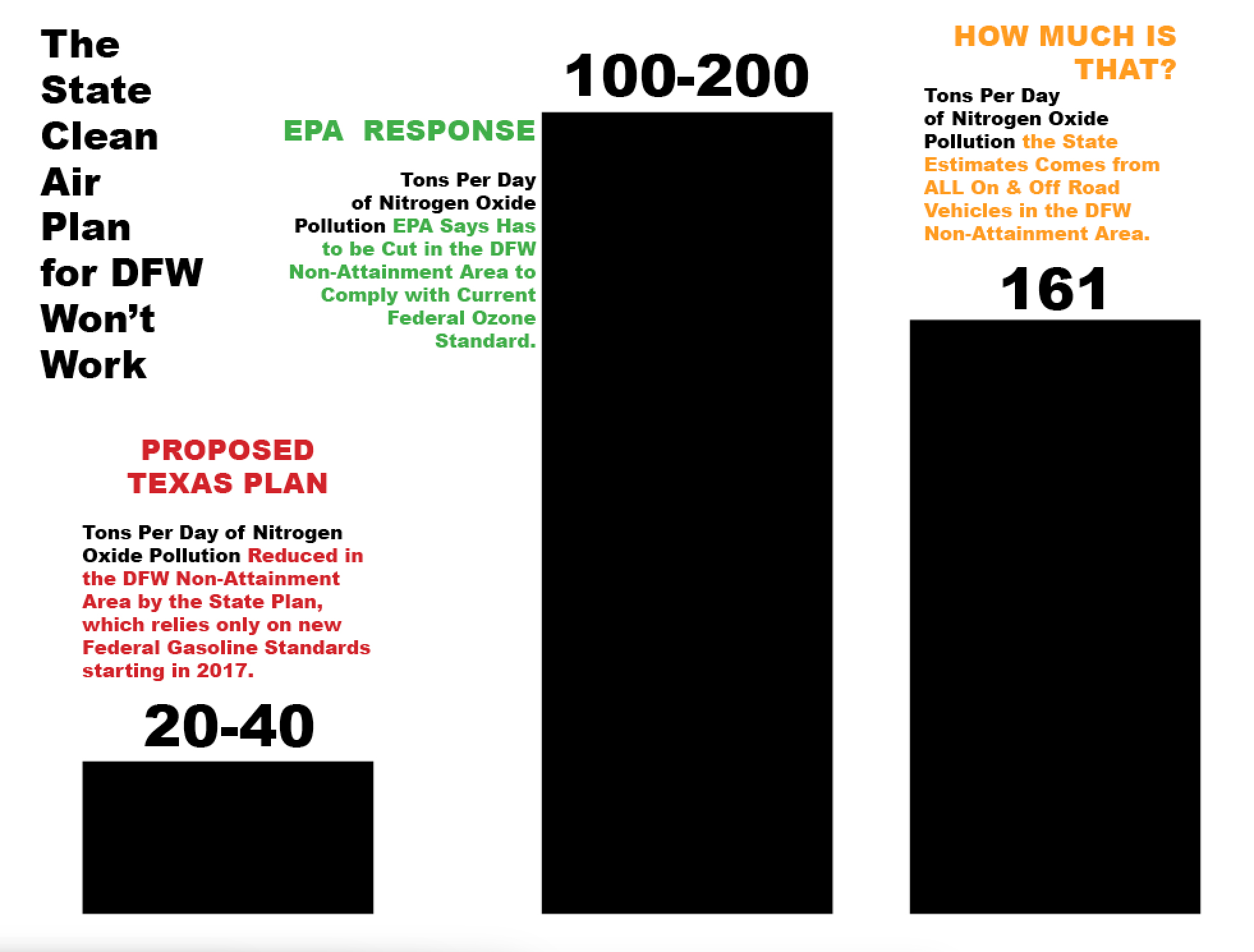Drilling in Dallas
Council Member (& Dallas Mayoral Candidate?) Scott Griggs is 1-Day University of Change Lunch Speaker
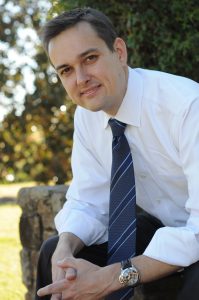 If a full day of informative workshops by experts, networking with other local activists and organizers, plus lunch wasn’t enough to get you interested in coming to our 1-Day University of Change on Saturday December 8th, what about a mid-day briefing from long-tine Oak Cliff Council Member Scott Griggs on the importance of the upcoming May municipal elections – an election that may see him running for Mayor of Dallas?
If a full day of informative workshops by experts, networking with other local activists and organizers, plus lunch wasn’t enough to get you interested in coming to our 1-Day University of Change on Saturday December 8th, what about a mid-day briefing from long-tine Oak Cliff Council Member Scott Griggs on the importance of the upcoming May municipal elections – an election that may see him running for Mayor of Dallas?
Griggs is associated with “good government” initiatives making City Hall more transparent and accountable, but he’s also been a forceful advocate for New Urbanism “green government.”
Although widely remembered as a critic of the now-dead Trinity Toll Road, Griggs was first elected in 2011 with quite a bit of help from Dallas gas drilling opponents.
Seven years ago the Barnett Shale was still hopping and every local government was trying to cash in without concerns of any downside. Fights over drilling restrictions in Fort Worth, Southlake, and Grapevine had preceded the Dallas battle and industry wanted to impose the “Fort Worth model” of unchallenging drilling provisions on Dallas.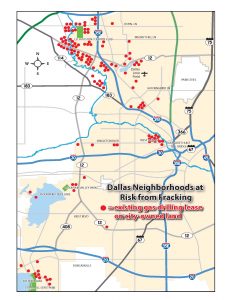
In 2011, nobody had yet discovered the secret agreement between then City Manager Mary Suhm and Driller Trinity East that gave permission to do all kinds of things not allowed by the city at the time – like drilling in floodplains and parks. City staff was going out of its way to shepherd drilling permits for the company through the bureaucracy even as citizen opposition convinced other drillers like Exxon to pull out of Dallas. Nobody could figure out why until the secret agreement was leaked to the Dallas Observer. There’s no direct evidence of who released the agreement, but speculation centered on Griggs, and then-city council member Angela Hunt.
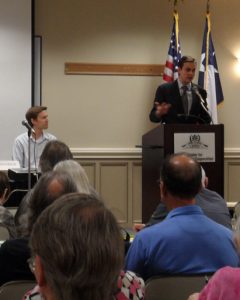
CM Scott Griggs addressing citizen Town Hall on gas drilling in 2012
From that point forward citizens begin winning more votes at the Planning Commission and Council. First to go was the favoritism staff had shown the proposed Trinity East drilling permits. They were defeated outright and resulted in a lawsuit filed by the company still in the courts over who promised to do what for whom. In the wake of their demise, the most protective gas drilling ordinance then proposed for any Texas city was passed by the Dallas Council. It established a more restrictive “Dallas model” to counterbalance the more lenient Fort Worth one.
If the only major accomplishments of Griggs city council years was killing the Zombie Toll Road and saving Dallas from irresponsible gas drilling, he’d have earned his pay. But those are only two of the many battles Griggs has fought with City Staff and his more establishment-oriented colleagues. The recent historic change in the city’s housing policy was fueled by his reforms. For the first time the City has made it policy not to keep concentrating subsidized housing in South Dallas areas which already have more than their fair share amidst high rates of poverty and lack of employment opportunities.
He’s one of a handful of council members who’s made it their business to take on entrenched city staff 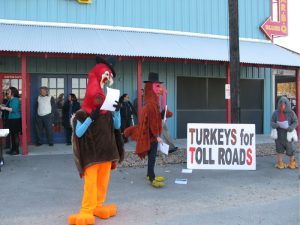 time and again over issues of responsiveness and common sense. Even though he sits on the other side of the horseshoe, he has the healthy skepticism of a citizen still fighting City Hall.
time and again over issues of responsiveness and common sense. Even though he sits on the other side of the horseshoe, he has the healthy skepticism of a citizen still fighting City Hall.
We’re not the only ones who hold a high opinion of Griggs. D magazine names him “Best Politician” in 2012 and Best Public Official 2016. the Dallas Observer named him Best Politician (2012) and Best Council Member (2013, 2015). The venerable Oak Cliff Conservation League gave him their Oak Cliff Warrior Award in 2015.
 Griggs terms-out as of this coming May and speculation is running high that he’s preparing to run for Mayor. If he wins there’s no doubt he would be the most progressive mayor for Big D since Laura Miller ten years ago. Depending on who takes his place and what other candidates win, Dallas could end up with an 8-vote solid voting progressive/green majority for Griggs. That promise of a truly reform-minded council is what’s motivating a new wave of anticipation for the municipal elections, especially after a very successful November in Dallas County as a whole.
Griggs terms-out as of this coming May and speculation is running high that he’s preparing to run for Mayor. If he wins there’s no doubt he would be the most progressive mayor for Big D since Laura Miller ten years ago. Depending on who takes his place and what other candidates win, Dallas could end up with an 8-vote solid voting progressive/green majority for Griggs. That promise of a truly reform-minded council is what’s motivating a new wave of anticipation for the municipal elections, especially after a very successful November in Dallas County as a whole.
Downwinders is proud to host the lunch time briefing from Council Member Griggs. Just as progressives used the recent mid-terms as a way to build a bluer Congress and State House, locals will be seeking to use the May Dallas elections to seat the most environmentally friendly city council it’s ever known.
Local governments are becoming the launching pads for change as state and federal agencies retreat or surrender their basic quality of life responsibilities. Having a progressive majority in Dallas that could join this effort would be a huge jump start for all kinds of good things to happen.
If Griggs decides to run (the window for filing to run in May begins January 16th) 1-Day University participants could get a sneak peak at the kind of vision he’ll be promoting for the city, maybe a trail run at a stump speech. For Dallas environmentalists, the May elections may actually begin at lunch on December 8th. Make sure you’re there.
Sign up for the 1-Day University here, or pay at the door.
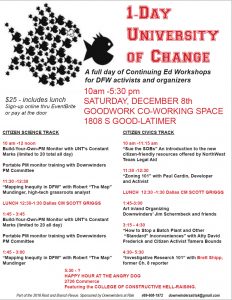
Citizens Just Won a Fight Over Local Control….Now What?
 In case you missed it, last Thursday the Bluestone company pulled its permit request for a new fracking waste Injection well that was going to be sited on the western shores of Lake Arlington.
In case you missed it, last Thursday the Bluestone company pulled its permit request for a new fracking waste Injection well that was going to be sited on the western shores of Lake Arlington.
Congratulations to Liveable Arlington and everyone else who contributed to this victory. It’s always great when you can stop a bad idea in its tracks, but to stop this one, with the current Powers-That-Be, is quite remarkable.
Bluestone’s application had united a broad spectrum of allies for a Barnett Shale fight – residents, local fractivists, municipalities, and water quality groups. Fort Worth had banned such wells years prior to the passage of notorious HB40, but Bluestone acted like that ban didn’t matter. Arlington objected over its drinking water source being imperiled by the well. Bluestone shrugged its shoulders.
Here was the first challenge to the uneasy truce that settled over the state between home rule cities and Austin after HB40 took effect. And it came not from an aspiring Denton trying to protect its citizens, but from industry. And it wasn’t targeting an upstart city, but the town that industry hailed as a model of gas regulation only two years ago when HB40 passed.
Thousands of letters opposing the permit were sent in to the Railroad Commission. An army of lawyers had been hired by Forth Worth and Arlington. It became a point of contention when RRC Commissioner Ryan Sitton visited from Austin in April to attend a Stop Six community meeting and Earth Day Texas. Momentum was with the opposition as it headed into a September hearing, already postponed twice. Bluestone was, seemingly, one injection well too far: the poster boy for overreach by an industry swelled with avarice.
Which makes its sudden absence a jolt to the system. On the one hand it’s good to know that in the current political climate there’s SOMETHING industry does that goes too far, even for the Texas “bidness-friendly” regulatory establishment.
On the other, it takes the air out of the largest wave of opposition to a gas patch permit in a very long time and brings us back to the truce frozen in place in when HB40 passed. Everyone is settling back into the stifled status quo, where technology, problems, and profits can advance with time, but local regulations are forever stuck in 2015.
All that energy into opposing Bluestone, only to arrive back where we started.
Which is why now, when citizens just won a major victory, is not the time to take our foot off the gas. It’s actually the time to set the stage for a fight in Austin in 2019.
Bluestone’s permit application proves cities must have more protection than HB40 provides. It’s still a poster boy for overreach. But so are other fights. On the same day the news was announced about Bluestone’s withdrawal, the owners of a proposed concrete crushing plant that Fort Worth Eastsiders fought off last year turned back up and filed for another try. Even though city zoning prohibits the facility from the location it wants near city parks and a school.
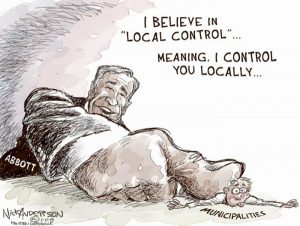 Statewide, there’s a growing backlash to Austin’s attempt to take away any and all vestiges of traditional Texas home rule local control. What started with protecting the gas industry has now swept up everything from trees to immigration and many Texas citizens, even conservative ones, are aghast at the result.
Statewide, there’s a growing backlash to Austin’s attempt to take away any and all vestiges of traditional Texas home rule local control. What started with protecting the gas industry has now swept up everything from trees to immigration and many Texas citizens, even conservative ones, are aghast at the result.
Environmentalists and fracktivists need to take advantage of this shift in the swing of the pendulum. In 2017 all of our efforts to clean-up the gas industry begin and end at the local level, where office holders must live with the results of their decisions side-by-side with their constituents. And yet HB40 makes any local advancement impossible. To get anywhere, to move off dead center, that law must be amended, or rescinded.
That is a multi-year, statewide effort that has to begin now if it’s to arrive in Austin in January 2019 with any impact.
To pull that off the movement will have to get over its aversion to coordinating regionally across city limits and be more proactive. So far, the fights in the Barnett have been city-by city, with no overarching alliances. Less coordination has meant less power. All one has to do is look at the anemic responses to HB40 in this year’s legislature to see how weak this strategy has made the movement.
But some hope could arrive in Austin in January 2019 in the form of an organized coalition of the self-interested promoting good-old fashioned local control, working with the victors of what could be a November 2018 mid-term “wave” election that might even reshape the Texas Legislature.
Who will be the architects of that strategy? Certainly not any of the larger national environmental groups, who’ve written Texas off and only want to collet money here, not spend it. It will probably have to be home grown with the assist of new groups like the Campaign to Defend Local Solutions that are linking-up threats to local control across the country.
It feels good for citizens to win one. And it would be nice if we could rest a while now and enjoy the victory, because they are so few and far between.
But sinking back into inaction only guarantees that another Bluestone will be showing up. If not in your backyard, then someone else’s. Now that we’ve established where the line in the sand is, it’s time to move the line forward.
Next Week Gives You Two Chances to Press RRC Commissioner on Lake Arlington Injection Well
Texas Railroad Commissioner Ryan Sitton in DFW Next Week
Thursday Night, April 20, 2017 6:00 PM – 8:00 PM
Community Forum about: Injection Disposal Wells
Handley Meadowbrook Community Center
6201 Beaty St, Fort Worth, TX 76112
Sponsored by St. Rep Nicole Collier
Friday Morning, April 21st, 10:50 – 11:40 am
Responsible Shale Extraction Roundtable Discussion
Automotive Building, Earth Day Texas at Fair Park
Open, public, and free appearances in DFW by Texas Railroad Commissioners these days are about as rare as actual trains at the RRC. But this next week offers two chances for local residents to see, hear, and talk to a real Commissioner without having to donate money to his campaign.
Irving’s own Ryan Sitton, RRC Commissioner since 2014, will be in town for two free public forums on consecutive days on either side of the Metromess: Thursday night at a community meeting in Southeast Fort Worth and Friday morning at an Earth Day Texas appearance at Fair Park.
That’s important because Sitton is one of only three RRC votes that could decide to take the unprecedented action of permitting a huge fracking waste injection well on the shores of Lake Arlington, source of drinking water to hundreds of thousands, and just a short distance from Eugene McCray Park, one of the most popular recreational spots for Fort Worth’s black community.
On Thursday from 6 to 8 pm, at the Handley Meadowbrook Community Center, Sitton will be the featured guest of a forum on the injection well sponsored by State Representative Nicole Collier, who represents Stop Six.
On Friday morning, from 10:50 to 11:40 am Sitton will be one of four participants in a Earth Day Texas roundtable discussion at Fair Park on “Responsible Shale Extraction” as part of UTA’s C.L.E.A.R. ambitious two-day symposium on the oil and gas industry within the weekend extravaganza. Also on the Earth Day panel are UTA’s Dr. Kevin Shugg, Director of CLEAR, Laura Buchanan, who’s the Director of the Texas Land and Mineral Rights Association, and Downwinders’ own Jim Schermbeck.
Sitton spent his early career working for the oil and gas industry, including ALCOA, Oxy, Marathon, and Berwanger Engineering and Consulting. In 2006, he and his wife founded PinnacleART, an engineering consulting company. Like all of his peers, his 2014 campaign was primarily financed by individuals and corporations he’s now in charge of regulating.
The threat to Lake Arlington has brought opposition from a host of cities who get some or most of their drinking water from the reservoir, including the City of Arlington and Grapevine, while earning Fort Worth’s outrage by challenging a pre-HB40 ban on such wells in the city limits. Back in 2015, Cowtown’s oil and gas drilling-friendly ordinance was touted by the industry as a model. It only took two years for the industry to decide it wanted an even more lenient code of conduct – one that would allow over a million gallons of fracking waste to be injected daily at high pressure into fissures directly under Lake Arlington.
Bluestone’s blatant provocation has produced an alliance between fractivists, environmentalists, Stop Six residents, and municipalities like Fort Worth that was unthinkable in 2015.
These two appearances by Sitton are likely one of the only opportunities most DFW residents will get to voice their opposition to the injection well to a RRC Commissioner in person before the May hearing September hearing on the permit.
The two-day hearing before the entire RRC will take place in Austin, not Arlington or Ft. Worth, and after that, no matter the ruling, the feeling is that all of this is going to be in court for a while. So please spread the word and use Thursday and Friday to make sure Commissioner Sitton knows exactly how local residents feel about the Bluestone permit.
You can also still use our Featured Citizen Action link send an email to the RRC protesting the injection well.
Make no mistake about it, the decision the RRC makes about this in-your-face industry confrontation with Fort Worth – whether even a “model” ordinance can withstand the rapacious regulatory rollback currently underway within federal and state government, is going to be a landmark one affecting every city in Texas. Don’t sit it out.
Downwinders Participates in First Earth Day Texas Oil and Gas Symposium
Downwinders at Risk is proud to be taking part in the first annual Responsible Shale Energy Extraction (RSEE) Symposium & Exposition, happening over two days at this year’s at Fair Park in Dallas, Friday April 21st and Saturday, April 22nd.
Climate Change superstar Dr. Katherine Hayhoe, Fracking health-effects lecturer (and Downwinder friend) Dr. Anne Epstein, and the Texas Railroad Commission’s own Ryan Sitton will also be participating, along with lots of others.
UTA’s Collaborative Laboratories for Environmental Analysis and Remediation, or (CLEAR) is the event’s primary sponsor and organizer, with an assist from the Cynthia and George Mitchell Foundation in Houston. Some of you may know the late George Mitchell as the inventor of fracking, but even he had serious second thoughts about the way the technology was being used.
The Symposium is an attempt to round-up scientists, industry advocates, environmental groups, and technology developers to talk both about fracking’s very real problems, and possible solutions, in an open forum.
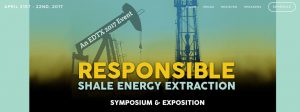 Since 2012 CLEAR has been out and about collecting samples throughout the Barnett Shale and other plays, identifying surface water and groundwater contamination issues that may or may not be directly linked to fracking itself. This is the first time in its history the group has taken on the task of sponsoring a two-day conference. Almost every aspect of unconventional shale mining, or hydraulic fracturing, will try to be addressed.
Since 2012 CLEAR has been out and about collecting samples throughout the Barnett Shale and other plays, identifying surface water and groundwater contamination issues that may or may not be directly linked to fracking itself. This is the first time in its history the group has taken on the task of sponsoring a two-day conference. Almost every aspect of unconventional shale mining, or hydraulic fracturing, will try to be addressed.
Everything is being run out of “The Westminster Abby of Texas,” Fair Park’s own Hall of State. A complete schedule is available here.
Downwinders’ Director Jim Schermbeck appears as part of a roundtable discussion on fracking in general, comparing the perspectives of landowners, gas operators, public health and environmental advocates and scientists. It includes water entrepreneurRichard Seline (AccelerateH20), TRRC Commissioner Ryan Sitton,Laura Buchanan, Executive Director of the Texas Land & Mineral Owners Association , and UTA’s own Kevin Schug.
Maybe you’ll want to come by The Hall of State Friday and mention to Commissioner Sitton how much you dislike the fact that BlueStone wants to put a new injection well on the shores of Lake Arlington. Or show-up on Saturday to see Dr. Hayhoe wow ’em again. But anytime you decide to visit Earth Day Texas, please make sure you come by and say hello to us at the Downwinders table over in the Centennial Building.
Testify! Stop Getting Railroaded by the RRC
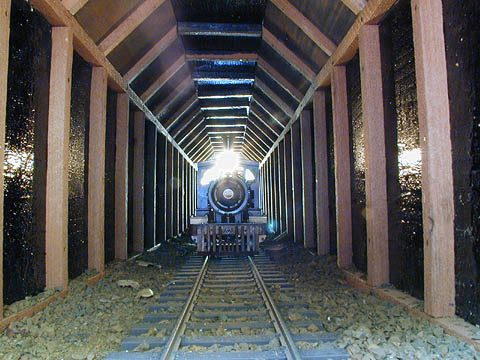 There's no better symbol of the anachronism that is Texas state government than the ineptly named Railroad Commission, or RRC. It has nothing to do with choo-choos, and everything to do with the State's oil and gas legacy.
There's no better symbol of the anachronism that is Texas state government than the ineptly named Railroad Commission, or RRC. It has nothing to do with choo-choos, and everything to do with the State's oil and gas legacy.
Or is it misnamed? Its innocuous title keeps it off a lot of citizens' radar screens while going about its business of shoving anyone or anything not in the oil and gas business around to make it more comfortable. Our drilling contaminating your water? You can to get the bottled stuff delivered. Our waste disposal causing earthquakes? You'll get used to it. Our air pollution causing your child's nosebleed? What's a couple of ER visits compared to our nation's energy security? Railroad? Yes – it's right there in our name.
Instead of being appointed by the Governor, the three RRC commissioners are elected statewide…with the help of contributions from the oil and gas industry. This isn't the fox guarding the hen house. There are no hens left.
This is why any review of the Commission, even one by the equally inept State Legislature, is a chance to get the word out about how god-awful the RRC is and what needs to be done to overhaul it. Beginning this month, that's what's happening, because 2017 is the year the Railroad Commission is getting "sunsetted" by the state.
Sunset laws demand that every state agency must come before the legislature and justify itself anew about every 12 years. Usually pro forma exercises, occasionally a terrible agency is allowed to die. Most have their missions amended or rules tweaked, or their names changed. this is how the "Texas Natural Resources Conservation Commission," or, "TNRCC/"TRAINWRECK," became the "Texas Commission on Environmental Quality/"TCEK." After being postponed last session, it's the Railroad Commission's turn now.
Tomorrow night's faux-official Town Hall meeting on the Railroad Commission being sponsored by Earthworks, Public Citizen and the Sierra Club is a kind of milk run for the more important job of testifying in front of state legislators in Austin later in the month, on the 22nd. Attend to find out how you can use this process to gain more publicity for its terrible record, and perhaps be able to actaully tweak the system to be more citizen-friendly.
Texas Railroad Commission Town Hall
Tuesday, August 2
Grapevine Convention Center
1209 Main St.
(located off 114 and Main St. exit)
Registration: 6:30 pm
Program: 7:00 pm
Texas Railroad Commission Public Testimony at the Capitol
Monday, August 22
For more information on the whole process, talk to Rita Beving with Public Citizen and the Sierra Club, 214.557.2271
How to Outflank HB40 in the Barnett Shale
 Last week, the EPA made an important admission.
Last week, the EPA made an important admission.
"Methane emissions from the oil and gas industry are significantly higher than previous official estimates, according to draft revisions of the U.S. greenhouse gas emissions inventory released Monday by the Environmental Protection Agency. At 9.3 million metric tons, revised estimates of 2013 emissions are 27% percent higher than the previous tally. Over a 20-year timeframe, those emissions have the same climate impact as over 200 coal-fired power plants."
This most recent analysis jives with other studies like the one from UTA/EDF that found Barnett Shale facilities leaking up to 50% more methane than previously estimated. In reaction to the information, EPA Chief Administrator Gina McCarthy was quoted as saying "we need to do more" to cut methane pollution.
In its last year in office the Obama administration is finally grasping that natural gas isn't the climate change wunderkind its promoters claimed and last week's announcement is the tacit admission they need to do more to crack down on oil and gas.
What has that got to do with DFW in 2016?
By Spring, the Regional office of the EPA is expected to announce that it has rejected the State's clean air plan for DFW in regard to its application of "Reasonably Available Control Technology." That means the state hasn't required the application of readily-available air pollution controls for major sources the way the Clean Air Act demands. Specifically, EPA staff have cited the failure of the state to lower the emission standards for the Midlothian cement kilns to reflect more modern technology. But it's not the only area where Texas fell short. There are no new pollution requirements for any oil and gas facilities in the state's plan either.
EPA rejection of the Technology section of the state's DFW air plan would mean the EPA would begin to draft its own clean air plan for the region. An EPA-drafted plan gives local citizens concerned about the health impacts of fracking an opportunity to persuade the Agency to use the plan to crack down on smog-forming Nitrogen Oxide (NOx) and Volatile Organic Compounds (VOCs) pollution in the Barnett Shale by requiring lower emission standards on all aspects of drilling and production.
While methane isn't considered a smog pollutant, it doesn't get emitted by itself. It comes out of a stack or valve, or leaks from a pipeline combined with smog-forming VOCs. So the more you control VOC pollution, the more you control methane pollution.
In light of last week's announcement, this gives EPA an extra incentive to go after VOC emissions in DFW even though the conventional wisdom is that it's combustion-generated Nitrogen Oxide pollution that really makes DFW smog so bad.
BTW, that conventional wisdom is under attack because the worst-performing air monitoring sites in North Texas are all in the Barnett Shale and heavily influenced by pollution from oil and gas facilities – both NOX and VOCs. It's possible to imagine a strategy to get smog numbers down in DFW solely by application of oil and gas emission regulations that can impact these important monitors – which drive the entire region's fate – even if the new regs have minimal impact on monitors elsewhere.
What kind of new regulations are we talking about?
* Start with the electrification of all 650 large natural gas compressors in the 10-county area.
* Do the same thing for all drilling rigs in the same 10-county area – nothing but electric.
* Emission standards for tanks and pipelines that reflect the latest leak-detection technology.
Inclusion of new EPA “Control Technique Guidelines" which are part of Agency's new methane rules. According to the Agency's release on the the new rules, “…reduction of VOC emissions will be very beneficial in areas where ozone levels approach or exceed the National Ambient Air Quality Standards for ozone."
Under the new rules, areas like DFW that host large concentrations of gas pollution sources and are officially categorized as “non-attainment” for smog receive "an analysis of the available, cost-effective technologies for controlling VOC emissions from covered oil and gas sources."
There's one more reason EPA has an incentive to go looking for all the cuts in oil and gas pollution it can find in the 10-county DFW non-attainment area: after the cement kilns, there's no other major sources the Agency can target locally.
Because while it has the authority in a federal clean air plan to regulate all pollution sources in that 10-county DFW non-Attainment area, the EPA can't write new emission standards for the East Texas coal plants located 100 miles outside of that 10-county area – even though those coal plants have more of an impact on North Texas smog than any other source of pollution. EPA (and us) can put pressure on the state to address these dinosaurs, but it can't touch them through a DFW air plan.
EPA staff has estimated it will take a cut of 100-200 TONS PER DAY in local smog-forming Nitrogen Oxide pollution for DFW reach the current 75 parts per billion smog standard. The State's "plan" – i.e. the federal gasoline fuel changes it relies on – only represents a 20-40 tons per day cut.
Where do the other 60 -160 tons a day in cuts come from?
To give you some idea of the size of that gap, the state estimates that all on and off road vehicles in the 10-county area will emit 161 tons per day of NOx in 2018.
State-of-the-art controls on all the cement plants might give you up to 15 tons a day. Electrification of the large compressors, another 15-16 tons per day eventually. After that it gets hard to find large volumes of cuts without the coal plants. And this is why the EPA should give cuts in VOC/methane a longer look than they have before – they're concentrated in the same areas where the region's worst-performing monitors are and they represent a huge source of climate change pollution that could also be another skin on the wall in addition to lowering smog levels.
There's no question the passage of HB40 has stymied grassroots progress toward more protective regulation of fracking by municipal governments in the Barnett Shale. It's thrown what was a fairly successful local movement into disarray. To date, there doesn't appear to be any consensus about strategies to combat the effects of the legislation.
But a way to outflank some of the impacts of HB 40 coming is coming down the pike, and it offers local fracktivists an opportunity to rally round a common, achievable goal – lowering emission levels across the board in the Barnett Shale. We can overlay a larger, stricter regional template for oil and gas regulation in place of 100 separate municipal ones.
What better way to nullify the efforts of the nullifiers in Austin?
In Defense of Mary Suhm. No. Really.
Jim Schutze at the Dallas Observer came across an interesting piece of video the other day. It was the deposition of former Dallas City Manager Mary Suhm in the on-going lawsuit between jilted gas driller Trinity East and the City.
In their cross-examination, lawyers for Trinity East are asking Suhm about a secret (at least to the Council and the public) 2008 Memorandum of Understanding between the two parties trading Special Use Permits for gas drilling and production sites the company wanted to access on City-owned flood plain and park land – despite prohibitions on drilling in those places at the time of the agreement – in return for $19 million in upfront leasing payments.
Trinity East's lawyers want Suhm to say the agreement "guaranteed" the permits, and when the Plan Commission subsequently voted to deny them, and the City Council lacked the super-majority to override that denial, the City, by way of its agent in this matter Mary Suhm, defaulted on the agreement.
City of Dallas lawyers want Suhm to say Trinity East executives knew the drilling sites were off-limits at the time they signed the memo and, despite paying the City of Dallas $19 million before they got their permits, the company knew it was not a sure thing. According to the City's lawyers, what Trinity got was precisely what Suhm promised in the agreement: her best efforts to maneuver the company's permits through City Hall bureaucracy.
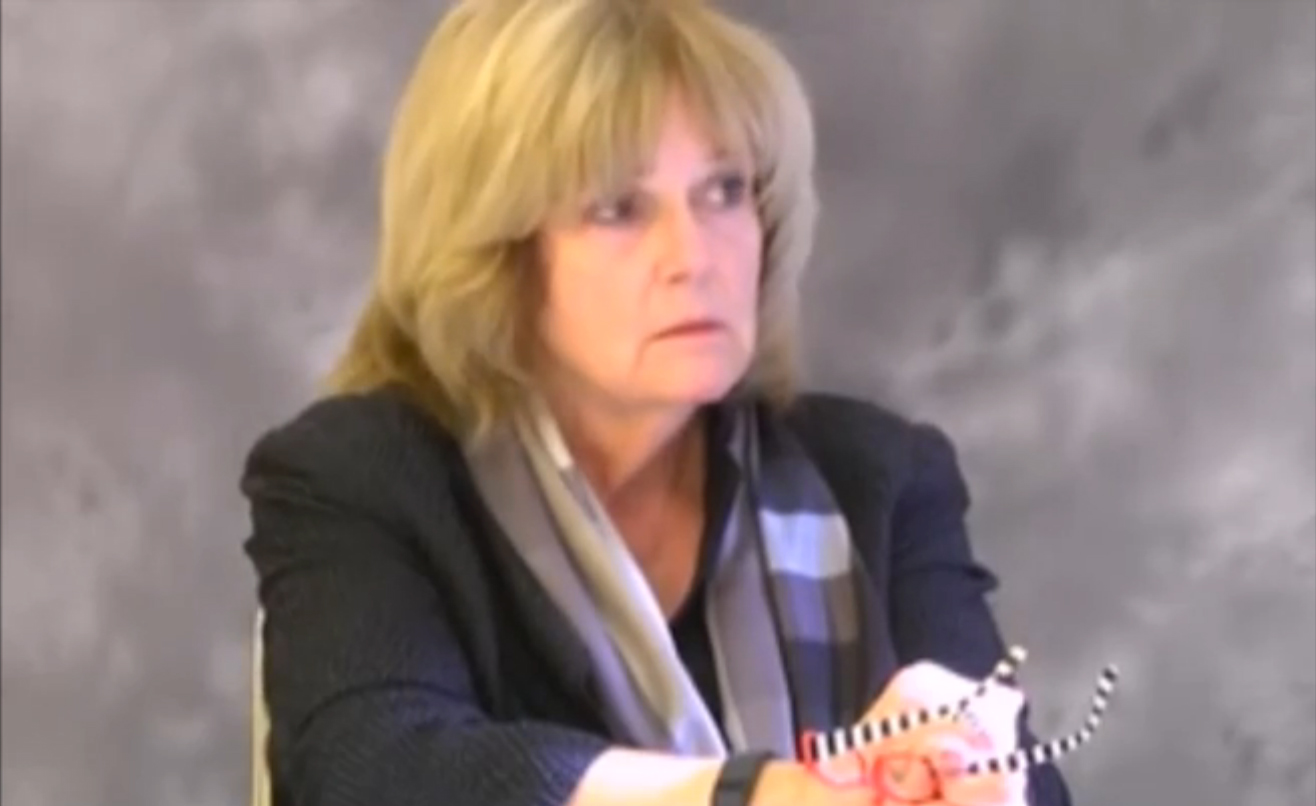 The crux of this back and forth comes at about the 4:30 point of the five minute video when Trinity East's lawyer, on behalf of his client, asks, "What is it they get for their $19 million dollars?"
The crux of this back and forth comes at about the 4:30 point of the five minute video when Trinity East's lawyer, on behalf of his client, asks, "What is it they get for their $19 million dollars?"
Suhm says Trinity East "got the right to apply" for SUP permits.
But those permits cost considerably less than $19 million. What was Trinity East really paying for with those leasing checks, and did they get their money's worth?
Allow us to defend Mary Suhm.
When Trinity East wrote those checks, Suhm was riding high as City Manager and her command over Council affairs was already legend, especially as she negotiated the city budget through very tight times. Trinity knew the signature of a mere elected official was not sufficient. Those come and go at City Hall with hardly anyone noticing. It wanted the boss's John Hancock on the document and the boss was Mary Suhm.
Besides a perfectly legal and hefty bribe when the City needed it during the Great Recession, Trinity was investing in the power of Mary Suhm and her relationships with the Powers-That-Be. The company had every confidence as the ring master of the downtown circus, Suhm could make things happen that otherwise wouldn't happen. She was in control.
Trinity East wasn't wrong – in 2008. Had they pursued their permit requests in the next one to three years, there's every likelihood Trinity East would have received them.
But the company waited until 2011.
What had happened in those intervening three years?
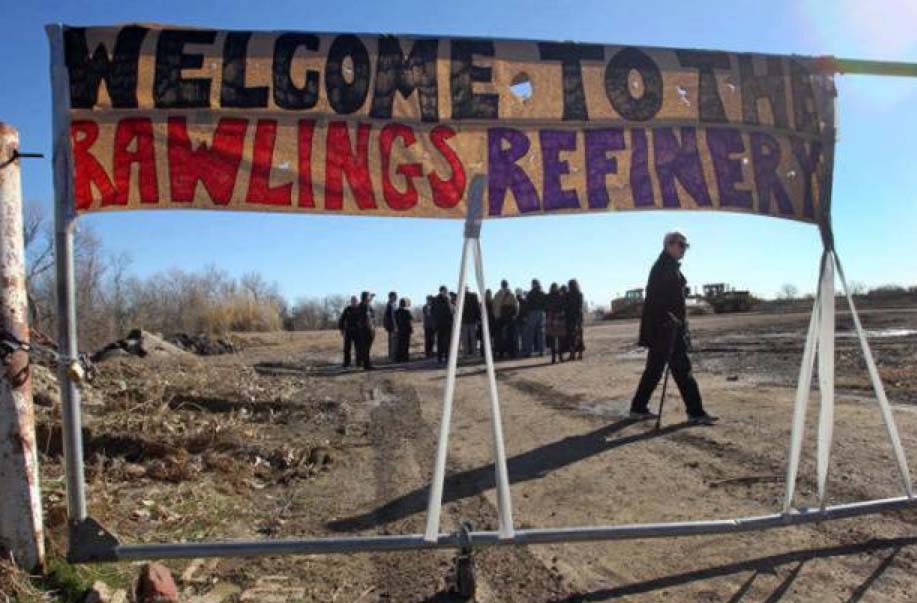
There was a drilling backlash beginning to reach full volume in the Barnett Shale, aided by a new national awareness of fracking as it spread to other parts of the country. Josh Fox's "Gasland" came out in 2010 and was nominated for an Academy Award in 2011. Burning tap water replaced a folksy Tommy Lee Jones as the face of gas drilling in North Texas. Citizen groups were sprouting in every city with drilling fighting for larger buffer zones and more pollution controls. There were stories in the media all the time. Because no health or environmental studies had been done on urban fracking, all kinds of new ones were launched or just being reported on for the first time.
In light of the new controversy, Councilwoman Angela Hunt helped drive the City to convene a gas drilling task force, giving residents a chance to organize around the issue before Trinity East even applied for their permits. Every concern – air, water, even earthquakes – that would later become ammunition for opponents showed up in this task force process first.
Scott Griggs ran for Dallas City Council from one of the districts targeted by new gas drilling permits and won on an anti-drilling platform against an incumbent. He joined Hunt as a fierce critic of Dallas urban drilling. Neighborhoods were showing new muscle.
And so the stage was set for more of an uphill fight than what Trinity probably would have confronted in 2010.
Mary Suhm must have taken note of some of this and sighed when Trinity finally put in for its permits. Now they show-up?
Still, let the record show she put on a stiff upper lip and gave 110% to the cause of getting Dallas City Hall to approve Trinity East's permits. She contorted bureaucracies. She muscled appointees and council members alike. She and her staff worked overtime to try to subvert every move of the growing opposition to Trinity East's permits. When the company lost, it wasn't because Mary Suhm didn't pull out all the stops, but despite the fact she did.
Now, we're pretty sure this is a defense the City of Dallas lawyers don't want to use, but we offer it up here in case they need to break the glass and begin building firebreaks in court to keep from paying back the $19 million.
These are only the most egregious examples residents know about.
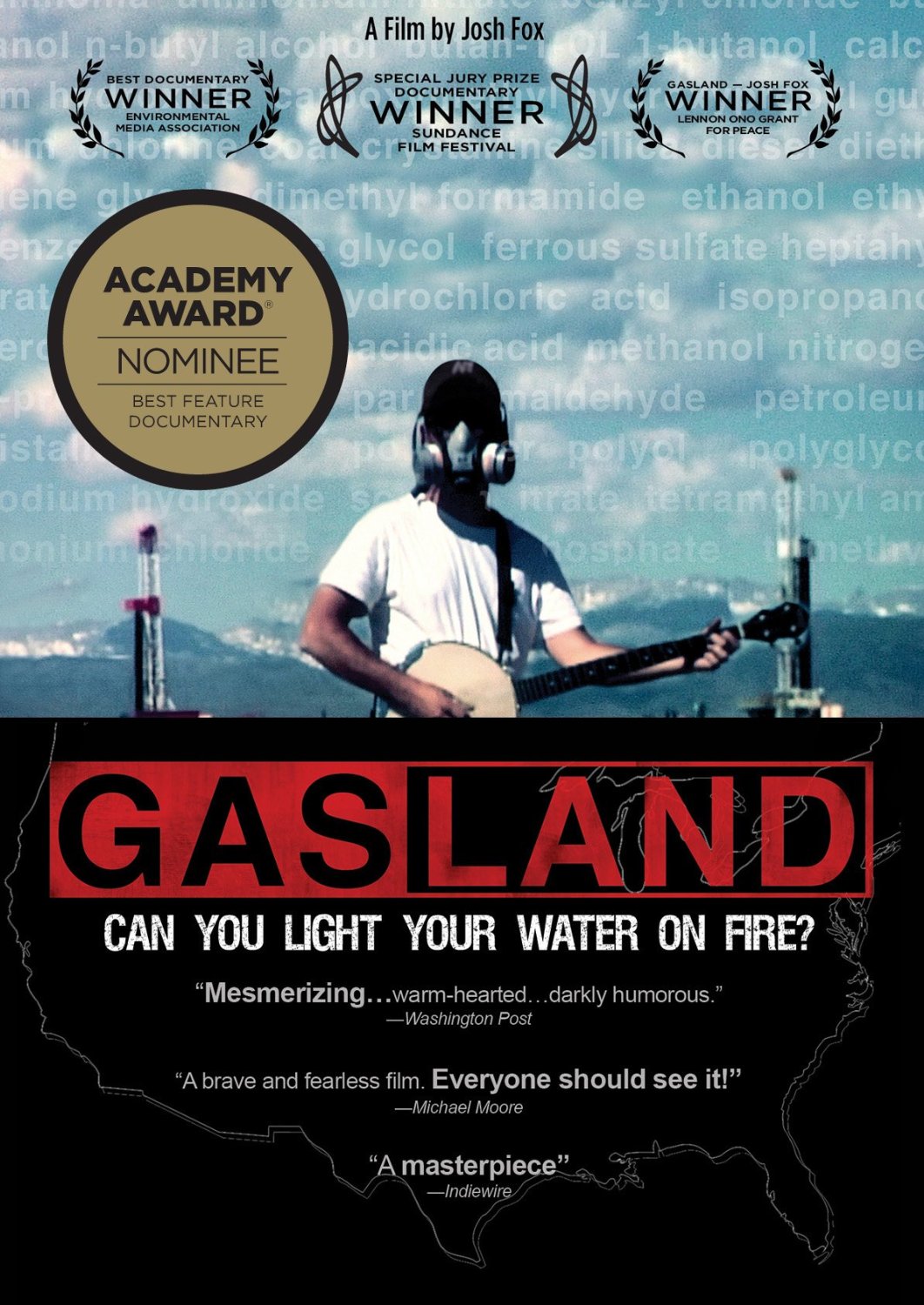
2011 Gas Drilling Task Force
In retrospect, it's easy to see Suhm's manipulation behind the last-minute Task Force endorsements of park and flood plain drilling. And when we say last-minute, we mean it.
Task Force members had already voted to keep the prohibition against drilling in these areas at a previous business meeting. The last meeting of the Task Force was supposed to be a pro forma affair that would ratify all previous recommendations and send them along to Council. Task Force member attendance was therefore down. This is when Task Force Chairwoman and former city council member Lois Finkelman chose to spring new votes on these two issues – and these two issues only – and won a reversal on each. Not only of the Task Force positions – but of current city policy, which of course didn't allow drilling in either area then.
Many excuses were used to justify this re-examination and re-vote that day, but none of them were the truth. Finkelman and staff were doing Suhm's bidding, and she was looking out for Trinity East. While it's not clear if Finkelman knew about Suhm's secret agreement, you can be sure Suhm, or someone on her behalf, made it clear to Finkelman it was VERY important to get these exemptions. Finkelman had been a friend to the clean air movement and other environmental causes during her tenure on the Council in the 1990's, but caved because of her relationship with Suhm, a belief she was helping the City out of a jam, or some other reason. At the end of the day, she weakened proposed city policy in accordance with what Trinity East wanted.
This is certainly something Trinity East got for its $19 million.
2012 Xmas Plan Commission Hearing on Trinity East Permits
Scheduled on December 20th, 2012, this was the first time gas drilling permits had been voted on for Dallas in three years, or pre-national outrage. It occurred before the Task Force recommendations had been considered and adopted into policy. In other words, after a call to reform its outdated drilling ordinance, and after a special Task Force had already been convened and issued its recommendations, Dallas was now about to grant three new permits, including one for a compressor station and refinery, under the old ordinance it was trying to replace. What was the rush? Why not wait and approve new permits until after the Task Force recommendations are written into a new ordinance? Because that would cause further public debate. More debate would highlight the problems of drilling in sensitive areas like park land and flood plains – still off limits in Dallas at the time.
In a transparent attempt to limit public awareness and participation even more, the City decided to hold this important hearing only five days before Christmas. Again, in retrospect, this has Mary Suhm's fingerprints all over it. And it almost worked. But just enough citizens showed up, representing enough well known groups and neighborhood organizations, and citing just enough new facts that had changed the situation since 2008 to win the climatic vote, 7 to 5 at 7:30 pm that evening. It was uncertain which way the decision would go right up until the very end.
Showing-up expecting to lose, instead citizens were elated. Overturning the denial would take a super majority of 12 votes on the Council – something that even then seemed unlikely. Citizens thought they had won. Mary Suhm had tried her best to rig the system, but the rigging failed. She tried again.
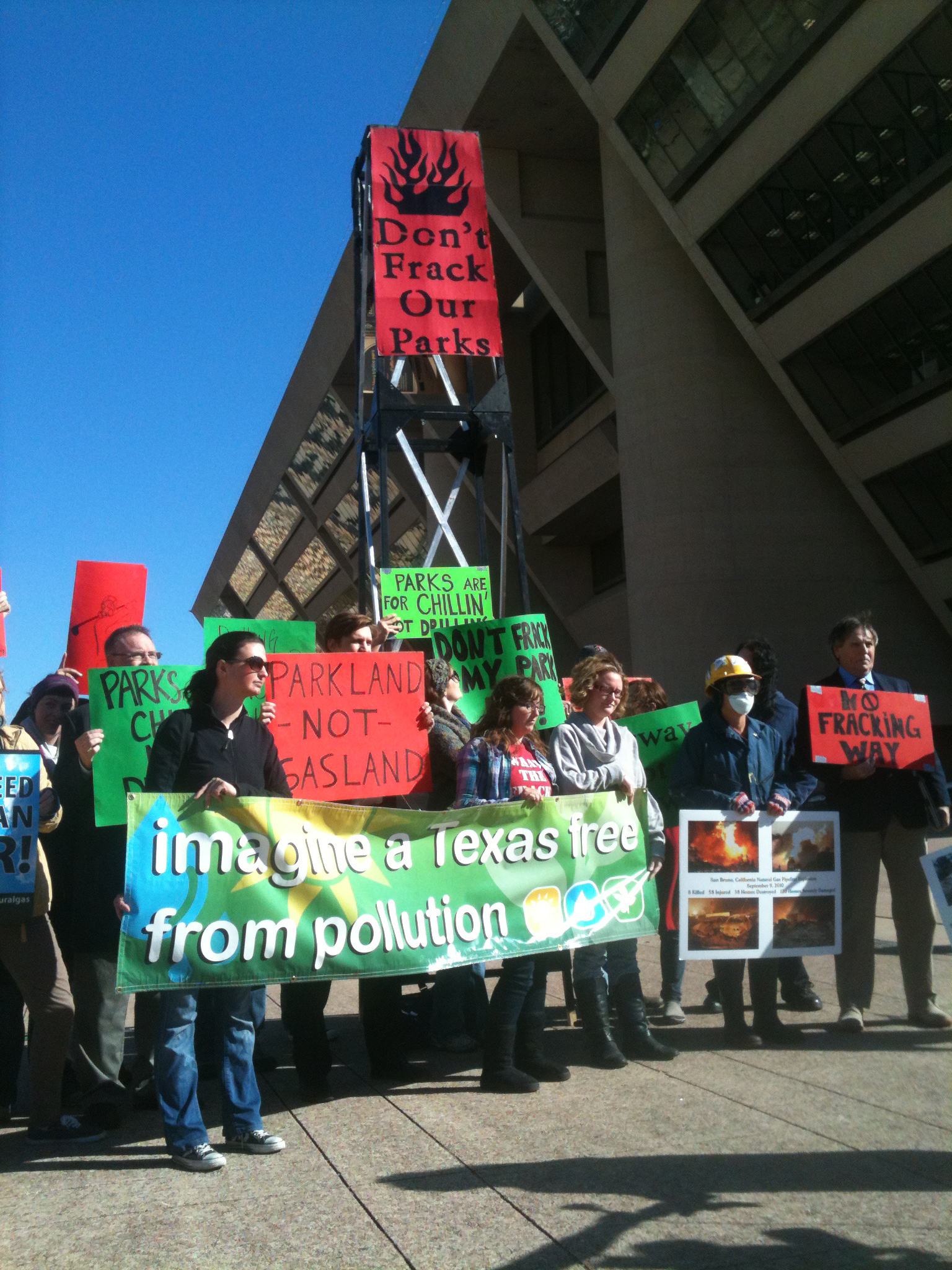
January- February 2013 Plan Commission "Reconsideration Vote" on Previous Permit Denial
Because she'd lost the December Plan Commission vote and knew she might not be able to get the 12 votes on the Council to overturn, Suhm had to do something creative. Viola! The Plan Commission would have a vote to "reconsider" their denial of Trinity East's permits only 21 days earlier. Nobody could remember the last time the Plan Commission even took such a vote. It was unprecedented. It was also Mary Suhm's handiwork.
That do-over decision came at a "special meeting" of the Plan Commission on January 10th, with a 6 to 5 vote to indeed take another vote on Trinity East's permits. This outcome, done under heavy police presence and with no public participation allowed, spurred one of the most iconic moments at Dallas City Hall in recent years – a 3 to five minute spontaneous standing crowd chant of "Shame."
You can see the speed at which Suhm is moving behind the scenes to engineer a better outcome after her unexpected defeat before Christmas. She's doing exactly what she promised Trinity East she would do. She's working the levers. Making things happen that would never otherwise happen. But now, it's costing her more to do so. The contortions of the system necessary to get the permits through are getting more twisted and harder to pull off gracefully. She's gone from talks with friends behind closed doors to forcing awkward "do-over" votes. It was obvious to the public there was something special about these Trinity East permits. Company officials had been dropping hints about some sort of an agreement with the City. Mayor Rawlings said permitting these sites "were a done deal" – although he didn't say why. It was getting messy.
Finally, on February 7th, the day the Plan Commission had scheduled the "do-over" vote, the Dallas Observer broke the story on the Suhm-Trinity East agreement. It was now clear what was driving the favoritism behind the treatment of the Trinity East permits by City Hall – going all the way back to the last-minute reversal of the Task Force, to the Christmas time hearing, to the pending "reconsider vote."
The timing could not have been worse for Suhm. We'll never know what the vote to reconsider might have been were there no headlines pointing to a City Hall cover-up. She may have thought she had the votes to keep the Trinity East permits alive. But with the story breaking that very day, the spotlight was too bright on the Plan Commission to take a new vote. Citizens won a reprieve and eventually a victory as the Commission requested the City Council deal with changing the current prohibitions against parkland and floodplain drilling before asking them to violate current ordinances again. That never happened. Instead, the three Trinity East permits were again denied by the Plan Commission in March 2013, albeit by razor-thin 8 to 7 and 9 to 6 margins.
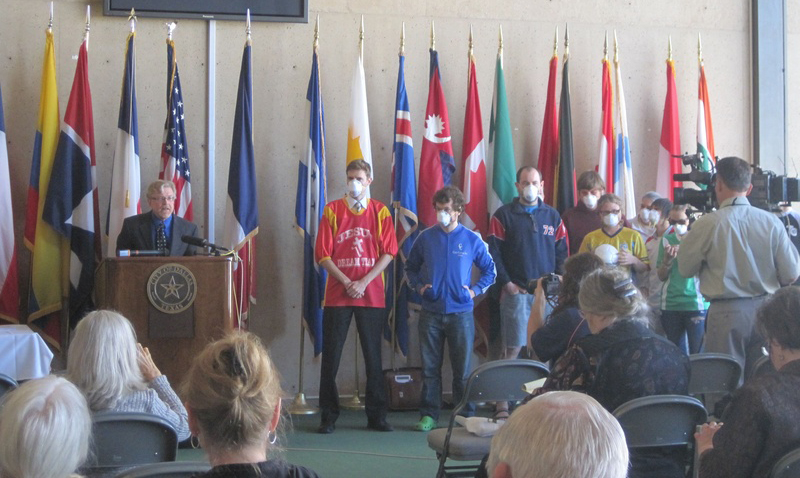 And that was that. Suhm was gone in four months. Officially it wasn't because of the cover-up of the Trinity East agreement, but of course everyone knew it was because the whole thing was headed to court one way or the other.
And that was that. Suhm was gone in four months. Officially it wasn't because of the cover-up of the Trinity East agreement, but of course everyone knew it was because the whole thing was headed to court one way or the other.
Although the Mayor tried to rally 12 votes on the Council to overturn, he couldn't do it. The prospect of the kind of rolicking citizen protests keeping the Plan Commission on the 6 o'clock news showing up at a Council Meetings could not have helped his cause at this point.
Urban fracking opponent Philip Kingston had replaced Hunt on the Council, Griggs was still there, and they were joined by enough other council members (Sandy Greyson, Monica Alonzo, Carolyn Davis, and Adam Medrano) to insure the Plan Commission vote would prevail.
At the end of the day, Trinity East walked away empty-handed. but make no mistake about it. Mary Suhm did all she could to subvert the system for Trinity East.
Had the Dallas Observer not revealed the secret agreement, she might have even won the day for the company and still be City Manager. Was it $19 million worth of subversion? At today's inflated rates, who knows? But other than funding a small army and declaring herself dictator of the Drilling Republic of Dallas, she did all she could.
If you're Trinity East you can complain about the outcome, but you can't complain about her effort. There were too many variables out of her control for once. Not the least of which was a vigorous, rowdy, neighborhood-based movement against urban fracking in Dallas that was taking the fight to the public square…and winning. Sometimes, even the most powerful City Manager is on the wrong side of history.
Peak Shale? More Energy from Renewables Than Gas by 2020
 In late November, a new report by Goldman Sachs came out predicitng “New wind turbines and solar panels worldwide will provide more energy over the next five years than U.S. shale-oil production has over the past five."
In late November, a new report by Goldman Sachs came out predicitng “New wind turbines and solar panels worldwide will provide more energy over the next five years than U.S. shale-oil production has over the past five."
“The leading renewable-energy technologies will add the equivalent of 6.2 million barrels of oil a day to the global energy mix, exceeding the 5.7 million barrels a day pumped from U.S. shale oil wells since 2010 …" According to the study, "the biggest shift will occur over the next decade as demand for renewable energy, LED lighting and plug-in vehicles accelerates.”
“Wind and solar are on track to exceed 100 gigawatts in new installations for the first time,’ the authors wrote. "Solar and wind energy are saving a gigaton of carbon dioxide emissions annually and the market for four leading low-carbon technologies is now worth more than $600 billion per year.”
It's possible we're seeing the "Bridge Fuel" run out of road as a new era in power generation gears up.
First Public Strategy Session for Texas “Fractivists” Since State Legislature Stripped Cities of Zoning Authority
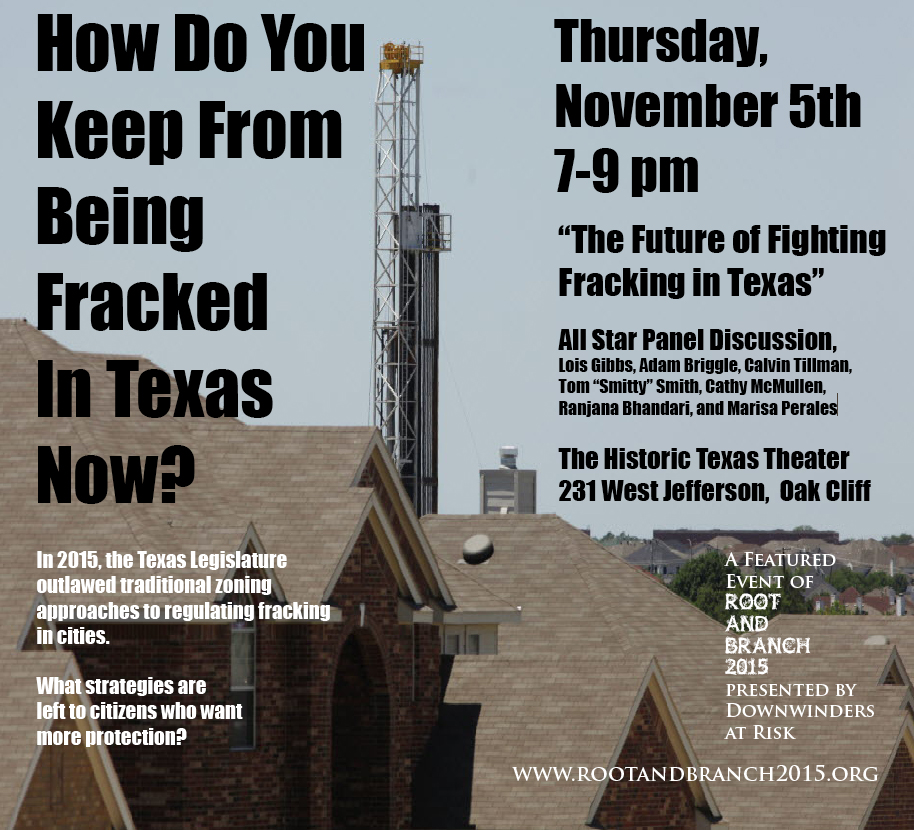 What: “The Future of Fighting Fracking in Texas”
What: “The Future of Fighting Fracking in Texas”
When: 7-9 pm Thursday, November 5th
Where: Historic Texas Theater in Oak Cliff, 231 West Jefferson
Who: Regional and Statewide Activists, Attorneys and Organizers
(Dallas)— A new alliance of groups fighting for more protective fracking regulation in Texas is using a Dallas environmental conference to host the first statewide strategy session responding to the passage of HB40 by this year’s state legislature.
Dubbing itself the “Texas Grassroots Network,” organizers include key members of local groups in Arlington, Denton, and Mansfield. Since their first meeting during the summer, they’ve also received calls from South Texas residents who live in the Eagle Ford gas and oil field. Their aim is to create something Texas has never had – a statewide coalition of grassroots groups tackling the same industry and the same problems caused by that industry setting up shop too close to people.
On the evening of Thursday, November 5th, they’re taking over Dallas’ historic Texas Theater to begin what they say will be a wide-ranging and free wheeling discussion about what the best options for those who don’t want to live side-by-side with drilling rigs in light of the legislature’s restrictions on local zoning.
“It’s time to regroup and come up new ideas and strategies about how to stop irresponsible fracking,” said Tamera Bounds, of Mansfield Gas Well Awareness. “We need to use our anger of what the legislature did to fuel new efforts and recruit new supporters. Most Texans want local control of fracking. Our job is to build a statewide movement reflecting that.”
“The Future of Fighting Fracking in Texas” is the second featured event of local clean air group’s Downwinders at Risk’s four-day floating conference, called “The Root and Branch Revue.” Other conference events include an evening of “environmental comedy” with Bar Politics, a day of workshops aimed at sharpening activist skills, and an attempt to construct “the world’s largest S.O.S” outside EPA Regional Headquarters in downtown Dallas. Lois Gibbs, of Love Canal fame, is the featured guest.
But it’s Thursday’s panel discussion and a follow-up on Saturday that could potentially have the biggest impact on the Texas environmental movement. Many opponents of urban fracking are still reeling from the state’s ban on local zoning restrictions last spring. There hasn’t yet been a coordinated or articulated response. Organizers of the Texas Theater discussion aim to fix that.
Participating will be some of the most high-profile regional fractivists, including Bounds, who’ll moderate, Adam Briggle and Cathy McMullen from Denton, Ranjana Bhandari form Arlington, and former DISH mayor Calvin Tillman. Joining them onstage on stage will be Public Citizen/Texas staffer Tom “Smitty” Smith, Austin-based environmental attorney Marisa Perales, and Lois Gibbs herself.
“HB 40 has forced us to look beyond our own city limits and find new ways to organize residents,” said Bounds. This public strategy session is one of he first steps we need to do that and regain momentum.”
Poll: Public Support for Local Control of Fracking is Strong, Will Have No Impact on Texas Legislature
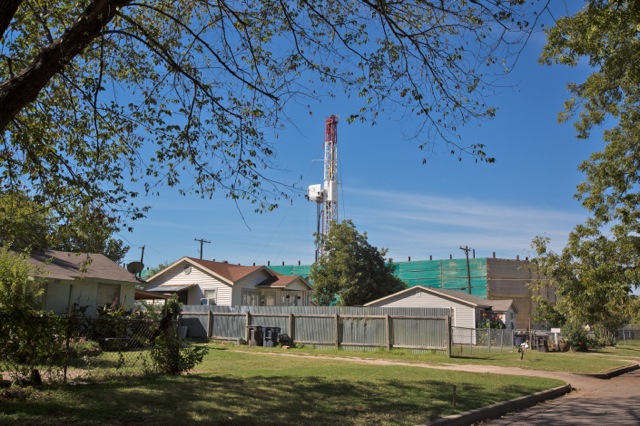
From the Too Little Too Late Department comes news that a new UT poll finds that 53% of Texans want cities to have the power to control where fracking takes place in their jurisdictions, even to the point of banning it, a la Denton. That number rises to 58% nationally. The poll surveyed 2,078 people from March 4th -13th from across the country and has a margin of error of 3 percentage points.
Considering that legislation to restrict that right sailed through the Texas House of Representatives by a vote of 118 to 22 and is on a fast track to be approved by the Texas Senate any day now, the poll's results should have exactly zero impact. Because 53% of Texan didn't get sizable campaign contributions from the oil and gas industry but about that same percentage of the Texas Legislature did.

